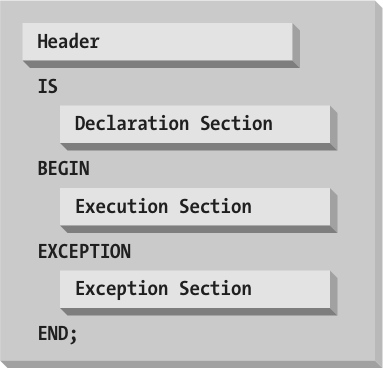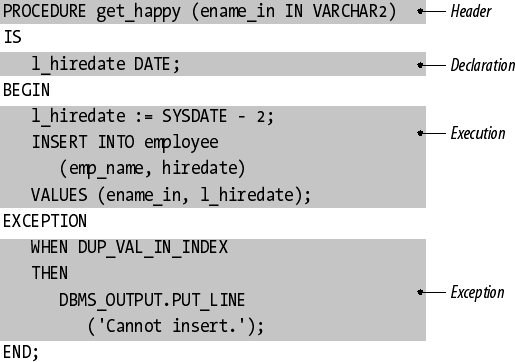PL/SQL Block Structure
In PL/SQL, as in most other procedural languages, the smallest meaningful grouping of code is known as a block. A block is a unit of code that provides execution and scoping boundaries for variable declarations and exception handling. PL/SQL allows you to create anonymous blocks (blocks of code that have no name) and named blocks, which may be packages, procedures, functions, triggers, or object types.
A PL/SQL block has up to four different sections, only one of which is mandatory:
- Header
Used only for named blocks. The header determines the way the named block or program must be called. Optional.
- Declaration section
Identifies variables, cursors, and subblocks that are referenced in the execution and exception sections. Optional.
- Execution section
Statements the PL/SQL runtime engine will execute at runtime. Mandatory.
- Exception section
Handles exceptions to normal processing (warnings and error conditions). Optional.
Figure 3-1 shows the structure of the PL/SQL block for a procedure.

Figure 3-1. The PL/SQL block structure
Figure 3-2 shows a procedure containing all four sections of the elements of a block. This particular block begins with the keyword PROCEDURE, and, like all blocks, ends with the keyword END.

Figure 3-2. A procedure containing all four sections
Anonymous ...
Get Oracle PL/SQL Programming, 5th Edition now with the O’Reilly learning platform.
O’Reilly members experience books, live events, courses curated by job role, and more from O’Reilly and nearly 200 top publishers.

